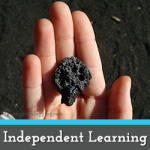 I was researching for one of the programs I am working on and ran across this statement from the National Science Teacher’s Association:
I was researching for one of the programs I am working on and ran across this statement from the National Science Teacher’s Association:
The middle school years, grades 5 through 9, are a time of tremendous physical, emotional, and cognitive changes for students. It also is a pivotal time in their understanding of and enthusiasm for science. Research has shown that if educators don’t capture students’ interest and enthusiasm in science by grade 7, students may never find their way back to science.
I find it scary to think that if students haven’t found an appreciation for science by 7th grade, they may never find it. On the other hand, it confirms what I have already been saying – science must be taught early and often.
You can read the rest of the article along with their recommendations here, but I will warn you that their declarations about middle school science are rather complicated. So, I wanted to boil things down for you all and share what I believe are the basics of middle school science.
If you haven’t even talked about science, these keys will help you to develop your student’s interest in the subject. If you have already sparked their enthusiasm for science in the elementary years, these ideas will help you fan the spark into a flame.
So, let’s take a gander at what middle school science should look like.
The Basics of Middle School Science
Your Goals for Middle School Science
You have three main goals for science during the middle school years. These are:
- To begin to train the student’s brain to think analytically about the facts of science.
- To familiarize the student with the basics of the scientific method through inquiry-based methods.
- To continue to feed the student with information about the world around them.
I like to say that the middle school student is like a bucket full of unorganized information. During these years he or she will be focusing on learning how to file and store that information.
The middle school student also has a strong desire to know why things work the way they do. So, when teaching science, you will be playing to these strengths while instructing them on how to make connections between the pieces of knowledge the student is learning.
Your Tools for Middle School Science
Now that you have your goals in mind, let’s look at the basic tools you need to craft a plan for science during the middle school years. You will need four basic components:
- Hands-on Inquiry – In other words, experiments or nature studies. You want to allow the student to experience real-life science and to build problem-solving skills as the student tests the principles he or she has learned.
- Information – You can use either living books, textbooks, or encyclopedias to feed your student with information. You can also use things like, memory work, vocabulary, and diagrams to reinforce what the student is learning.
- Writing – Short reports, note-taking, outlines, lab reports, and/or comprehension worksheets can all be used for middle school writing. Basically, you want to use writing to teach the student how to process, organize, and share the information he or she has learned.
- The Science Project – Once a year the middle school student should complete a science fair project which will walk the student through the scientific method from start to finish.
You can also have the student read about key scientists and search the web for current events in science. If you have not started giving quizzes or tests, the middle school years are a good time to begin doing so.
How to put it all together
How you put it all together will vary from homeschool to homeschool. Basically you need to have some kind of hands-on inquiry, information, and writing each week as well as schedule time for a science fair project once a year.
Week to week, some homeschoolers might start by reading from a living book. Then, they will head outside to find the principles brought up in the book in nature. They will finish the week by writing a short report on what they learned about the topic.
Others will start the week with an experiment. Then, they will read about the principles involved in an encyclopedia or textbook. They will finish up their week with by outlining what they read and writing a lab report for their experiment.
Others might start the week by reading in a textbook and filling out a comprehension worksheet from the chapter. Then, they will finish by doing a related experiment in which they see the principles from the text in action.
All these methods are acceptable ways to study science with your middle school student.
The Final Product
I trust that I have given you a better idea of what middle school science can look like. These years are a critical time to lay a good foundation for high school studies. If you have questions about middle school science, don’t hesitate to leave them below!









Thanks Paige! This is so important. I teach Pre-K through 6th grade and have found it very important that we foster science at an early age to keep kids interested. I also think what is key in keeping middle schoolers engaged is tapping in to what they are interested in. Science is everywhere, so you can easily apply science concepts to what students are into- whether it is soccer, music, video games or relationships with friends! If we don’t make those connections for them, then the concepts standing alone are boring.
Sarah,
I agree! Early and often is when you should start teaching science :-).
Paige